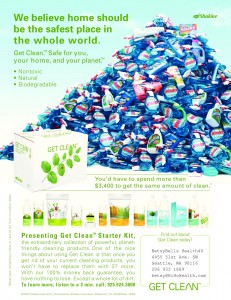Energy Pure Energy Chews
Pure Energy Chews
• Shaklee Energy Chews provide a clean burst of healthy energy to help you get that extra edge when you need it most. Each chew contains a scientific blend of caffeine from natural green tea extract, plus L-tyrosine, L-Theanine, B vitamins and Vitamin D3. And there are no artificial flavors, sweeteners or added preservatives you’ll find in other energy products.
That’s PURE energy!
Finally, a healthy alternative to high calorie, high volume energy drinks! Scientifically formulated Shaklee Energy™ contains the right ingredients to help energize your body and support alertness, focus, cognitive function, and mood.
• Energy-releasing B vitamins, immune-supporting Vitamin C and bone-building Vitamin D3
• Key amino acids L-Tyrosine and L-Theanine associated with mental alertness and focus
• Natural caffeine from green tea extract associated with energy and performance*
• No artificial flavors, sweeteners, or added preservatives and it’s gluten free
Energy Chews contain healthy ingredients work fast to help:
• Sustain energy*
• Improve performance*
• Stay alert*
• Sharpen focus*
• Improve mood*
Before Exercise use Shaklee Energy™ Chews
You need energy for motivation and to “spark” the metabolic reactions that fuel muscles. Shaklee Energy Chews provide a clean burst of healthy energy to help you get that extra edge when you need it most.
The Shaklee Difference
• Formulated with natural caffeine from green tea
• Contains no artificial flavors, sweeteners, or added preservatives
• Gluten free
• Just two chews per serving instead of a canned product
Sports nutrition products are sold at big-box retailers, drugstores, and even grocery stores. However, many conventional sports nutrition products, especially the most popular retailbrands, contain artificial flavors, sweeteners, and preservatives. Conventional sports products may be untested or they may contain ingredients that are unproven. Rather than testing products in clinical tests or with world-class athletes, many companies choose to introduce new products without scientific substantiation. Additionally, ingredients that can provide important benefits may be missing from some products. It doesn’t make sense to put unproven or untested ingredients in your body at the same time you are asking your body to deliver maximum effort and optimal performance.
Shaklee Sports Nutrition™ puts in the Best, to Bring out the Best
Shaklee Sports Nutrition products are used at the highest levels of competition so you can trust them every time you take them — before, during, and after your workouts. Train longer. Recover faster. Perform better. And don’t worry; these are natural products with no artificial flavors, sweeteners, or preservatives. Everything you need. Nothing you don’t. That’s PURE performance!
THE SHAKLEE DIFFERENCE
Always Safe
Natural products with:
✔ No artificial flavors, sweeteners, or preservatives
✔ No banned substances
✔ Exceptional quality control
Always Works
✔ World-class Shaklee-sponsored athletes have won over 100 medals
✔ Seven of Time Life’s Greatest Adventures of All Time were powered by Shaklee
✔ Clinically tested with proven results: Physique® and Performance®
Always Green
✔ Environmentally friendly packaging
Thousands of athletes around the world trust Shaklee Sports Nutrition™. We’ve got you covered no matter what you play, where you play, or how hard you play. Shaklee powers athletes to push limits and achieve more. Shaklee athletes have won more than 100 medals
• Seven of Time-Life’s Greatest Adventures of All Time were fueled by Shaklee
• Natural products with no artificial flavors, sweeteners, or preservatives
• Clinically tested with proven results:
– Performance® minimizes fluid loss to enhance hydration
– Performance increases endurance
– Physique® triggers the anabolic recovery state after exercise
– Physique restores muscle energy fast
Lean and toned is in: Shaklee products are proven to help you train longer and recover faster so you can stay lean and toned.
Convenience is in: Shaklee Energy™ Chews are more convenient than energy drinks to transport and consume.
Fitness and Endurance are in: Shaklee Sports Nutrition products provide ingredients to help you optimize fitness levels and athletic performance.
Natural is in: Shaklee Sports Nutrition products do not contain artificial flavors, sweeteners, or preservatives.
*These statements have not been evaluated by the Food and Drug Administration.
These products are not intended to diagnose, treat, cure, or prevent any disease.
Buy now at www.HIHoHealth.com
